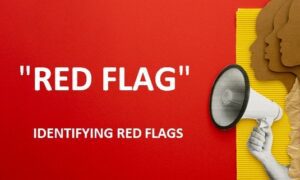Welcome to the realm of visual storytelling in web design, a domain where each pixel carries intention and every component acts as a brushstroke on the canvas of user interaction. In this digital era, capturing and leaving an indelible mark on your audience’s minds is no small task. But fear not! Armed with the prowess of visual storytelling, you possess the capacity to construct enduring experiences that beckon visitors back for more. Prepare to delve into skillful techniques, potent strategies, and inspiring instances that will aid you in forging websites that weave narratives worth remembering. Let’s wield the power of pixels and embark on an extraordinary voyage through the realm of crafting user experiences that resonate!
Introduction
The Essence of Visual Storytelling
At its core, visual storytelling is the art of conveying tales through images. Yet, its depth surpasses this simple definition. It involves harnessing all facets of design—ranging from typography and color to layout and whitespace—to weave a unified and captivating journey that guides users.
It’s no secret that humans are inherently drawn to visuals. Studies affirm that our brains process images a staggering 60,000 times faster than text. Thus, it’s logical that integrating visuals into your web design can enhance audience engagement and amplify message communication.
The question is: how can you cultivate these visual stories? Here are some pointers:
Begin with a Blueprint: Just like any compelling narrative, your visual story should have a beginning, middle, and end. Define what you intend to convey and how you plan to present it before commencing design.
Chromatic Selection: Colors possess the ability to evoke emotions; hence, choose them judiciously. For instance, blue often signifies trust and tranquility, while yellow conveys joy and energy.
Typography’s Tone: The chosen font can also influence users’ perception of your website. A sans-serif font imparts a modern vibe, whereas a serif font lends a traditional touch.
Embrace Contrast: Employ contrasts such as light and dark shades, diverse fonts or font sizes, and various layouts to kindle visual intrigue.
Embrace Simplicity: An excess of clutter can render your narrative perplexing. Stick to the essentials and allow your visuals to do the talking.
Advantages of Visual Storytelling in Web Design
The merits of visual storytelling in web design are manifold. By leveraging visuals to narrate a tale, web designers can evoke emotional connections, establish memorable encounters, and communicate information effectively.
As visuals are processed 60,000 times faster than text, their integration aids users in comprehending and retaining messages more efficiently. Furthermore, emotional reactions to visuals often surpass those to text, thereby fostering a stronger bond with the audience.
Moreover, visuals have the power to simplify intricate concepts, enhancing user accessibility. When thoughtfully employed, they can seamlessly guide users through your website, offering engaging content that entices return visits.
Employing Imagery and Graphics for Captivating User Experiences
The inclusion of images and graphics stands as a pivotal facet of web design, crucial for sculpting captivating user experiences. Apt visuals facilitate brand storytelling and navigate users through your website, striking a balance between aesthetic allure and comprehensibility.
When selecting visuals, consider both aesthetic appeal and the conveyed message. The chosen images should harmonize with the content while retaining high quality. Furthermore, their relevance to users’ journeys on your site is paramount.
Ponder over how to employ images and graphics to break up text, emphasize key points, or infuse vitality into otherwise mundane pages. A well-designed graphic can captivate attention akin to engaging content.
Multiple avenues exist to source top-tier visuals: procure stock photos, enlist professional photographers or designers, or craft original visual assets. Opting for a DIY approach? Numerous online tools facilitate the creation of uncomplicated graphics or editing of existing images.
Regardless of your route, ensure your selected visuals contribute to an immersive, unforgettable user experience on your website.
The Potency of Color in Visual Storytelling
Color stands among the foremost components of visual storytelling. It sets the narrative’s tone, conveys emotions, and forges an ambiance. When adroitly wielded, color holds the capacity to significantly shape users’ encounters with websites or apps.
Consider the transformative potential of color in these scenarios:
The initial instance employs warm orange tones, emanating an aura of affability. The subsequent example, adorned in serene blue, invokes a calming ambiance. These instances highlight color’s capacity to mold a website’s or app’s mood.
Granted, color isn’t the lone contributor to visual storytelling. Typography, iconography, photography, and layout also play pivotal roles. Nonetheless, effective use of color wields a powerful tool for cultivating indelible user experiences.
Principles of Profound Visual Storytelling on the Web
While the web is fundamentally a visual medium, the significance of profound visual storytelling within web design remains paramount. In a world awash with ceaseless information and content, ensuring your message is not solely seen but also understood and remembered assumes paramount importance.
Several cardinal principles underpin effective visual storytelling on the web:
Embrace Simplicity: A fundamental tenet of storytelling is simplicity. Online, this translates to clean, uncluttered design and succinct, lucid language. Avoid cramming excessive data into a confined space, as user fatigue ensues rapidly. Concentrate on conveying a solitary central message or call to action per page.
Aesthetic Allure: Besides simplicity, visual stories must possess aesthetic appeal. Integrate top-quality images and videos, while bestowing attention upon the overall visual demeanor of your site. Crafting an aesthetically pleasing, immersive user interface fosters sustained user interest.
Pursue Consistency: Consistency is the linchpin of web-based visual storytelling. Harmonize all site elements—text, images, videos, and more—to coalesce into a coherent experience. This fosters user engagement and enhances comprehension of your message.
Interactivity’s Charm: Don’t shy away from interactive elements that captivate users and augment their grasp of your narrative. Animations, quizzes, and games can inject an element of enjoyment and lasting remembrance into the experience.
By adhering to these principles of effective visual storytelling on the web, you guarantee your message’s visibility, comprehension, and retention among your target audience.
Guidelines for Crafting Unforgettable Web Experiences through Visual Storytelling
Visual storytelling stands as a cornerstone of web design, facilitating brand connection and message assimilation. Here are some guidelines for crafting memorable web experiences using visual storytelling:
Strive for Simplicity: Avoid overwhelming a page or design. Focus on a central message and ensure visuals align with it.
Aesthetics Matter: Employ attention-grabbing, pertinent, high-quality images and graphics.
Uphold Consistency: Maintain visual homogeneity across your website to foster brand recognition.
Weave a Narrative: Utilize visuals to narrate a tale that captivates users and conveys your message.
Test and Refine: Prior to launch, test designs on real users and be prepared to refine them based on feedback.
Conclusion
Visual storytelling wields immense potential for web designers to forge enduring user experiences. This approach enthralls users, spurring interaction with your website. By grasping the tenets of visual storytelling, you can craft designs that are both captivating and imaginative, leaving an indelible imprint on visitors. Through astute design decisions, you can forge an experience that lingers long in users’ memories.



































